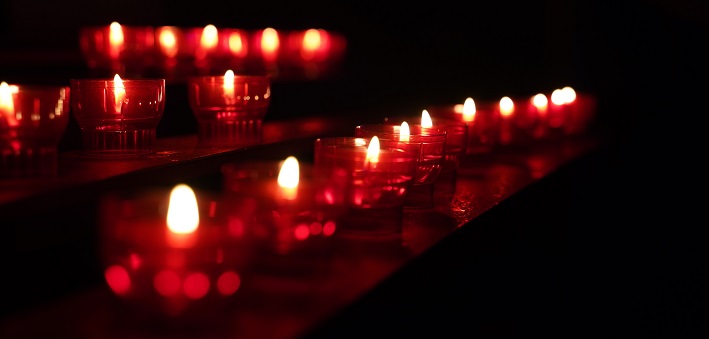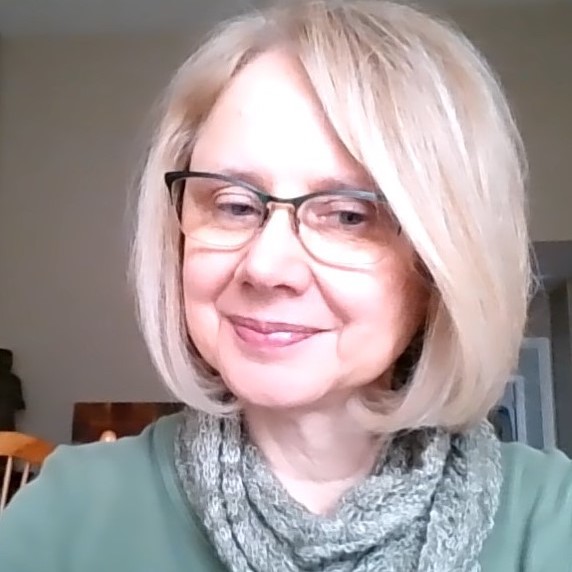Commentary on Revelation 21:1-6a
Any sermon on today’s lectionary passage ought to be prefaced with “Spoiler Alert!” as the beginning of the end of John’s apocalypse is narrated in dramatic detail. Maybe “Super Spoiler Alert!” might be a better warning, because this is not just the end of the book of Revelation, nor just the end of the New Testament, but the end of the entire history of salvation as told in our Christian Bible. The lectionary passage itself ends with this proclamation from “the one who is seated on the throne”: “It is done! I am the Alpha and the Omega, the beginning and the end” (21:5-6a).
Yet, while knowing how a movie ends often spoils the experience of watching the movie, knowing how the Christian history of salvation ends enhances our ability to walk with Christ from the beginning, through to the end. Knowing how the story ends allows for a particularly Christian view of “history”—the conviction that, rather than being arbitrarily pushed through time by human actions, humanity is instead being pulled into time through God’s loving intention.
First things: living through suffering with integrity
This notion of time is evident in John of Patmos’ talk of the “first things” passing away (Revelation 21:4). What are these first things? According to the voice from the throne, the first things are sources of suffering: all the things on heaven and earth that serve as sources of death and mourning and crying and pain. Even prior to the global pandemic and climate crisis, we could claim to know all too well the harsh realities of death, mourning, crying and pain. Along with the first century communities John of Patmos was writing to, we are living in and through these “first things.”
It is a difficult thing to live with death and mourning and crying and pain, and this is why John narrates the end of the story for us. Knowing the end of the story equips us to live through suffering without corruption: without falling into complicity with the systems producing and benefitting from that suffering.1 Note that nothing in our passage indicates that knowing (read: “believing in”) the end of the story somehow magically exempts us from suffering. This is consistent with the entire book of Revelation: it does not tutor us on how to avoid the suffering the first things bring, in and of themselves. Rather, John narrates the reality of suffering and empowers his hearers to live into and through that suffering with integrity—as followers of Christ, to the end.
The New Jerusalem and the bright day of justice—two dreamers
Knowing the end of the story is key to living through the first things with integrity. The Rev. Martin Luther King, Jr. acted on this when he delivered his 1963 “I Have a Dream” speech by presenting his hearers with the image of “the bright day of justice.” Where John of Patmos sees the New Jerusalem adorned by God as bride, Rev. King sees “the bright day of Justice”:
“There will be neither rest nor tranquility in America until the Negro is granted his citizenship rights. The whirlwinds of revolt will continue to shake the foundations of our nation until the bright day of justice emerges.” – Rev. Martin Luther King, Jr., Aug 28, 19632
Notice that Rev. King did not say, “we hope for…” or “as we continue to work for…” the bright day of justice. Rather, that bright day of justice is a given for him—a reality that he could see and that he declared for his hearers. Like John of Patmos, Rev. King knows the end of the story. Also, like John of Patmos, Rev. King describes the reality of living through the dissolution of the “first things” (the unjust systems), citing the “whirlwinds of revolt” and the continued shaking of nations’ “foundations.”
Indeed, the scripted portion of Rev. King’s speech was short and dominated by an inventory of his hearers’ sufferings; it contained only a brief mention of the bright day of justice. However, halfway through his scripted speech, Rev. King extemporaneously launched into his “I have a dream…” declarations. Either Mahalia Jackson (famously present that day) or his own intuition urged him on to better convince his hearers of this bright day of justice.3 The vivid imagery Rev. King so eloquently described in 1963 continues to inspire today. It is the vivid end-of-the-story imagery—the bright day of justice so convincingly communicated via his “I have a dream…” litany—that continues to inspire the peaceful trajectory of the civil rights movement today. Knowing the end of the story matters.
Hope in the beginning of the end
As a seminary professor and some-time preacher, I have had the opportunity to ask rooms full of seminarians and churches full of worshipers, “How does our story end?” Invariably, I get blank stares in response. I can’t help but think this has something to do with preachers’ aversion to the book of Revelation. But here, with today’s passage, is an opportunity to preach Revelation as the message of hope that it is. With crisis-weary hearers all around us—asking, “Could this be the beginning of the end?”—proclaiming the beginning of the end of our story may be the best place to start.
Notes
- For example: “In the face of ecological crisis, what needs to be uncovered is both the need for drastic overhaul to the way our world operates and the means of living differently. The call of John [of Patmos] to costly witness and non-participation… may be able to provide resources for alternative ways of inhabiting our scarred cosmos…” Ryan L. Hansen, “On Trying to Praise the Mutilated World: Reading Revelation in the Midst of Ecological Crisis,” in Reading the Bible in an Age of Crisis (Ed. Bruce Worthington; Minneapolis: Fortress Press, 2015), 289.
- https://www.npr.org/2010/01/18/122701268/i-have-a-dream-speech-in-its-entirety Accessed 31 August 2021.
- https://kinginstitute.stanford.edu/encyclopedia/i-have-dream Accessed 7 September 2021.


November 7, 2021